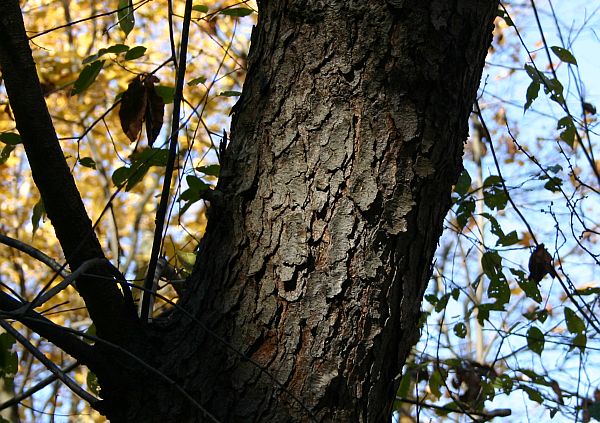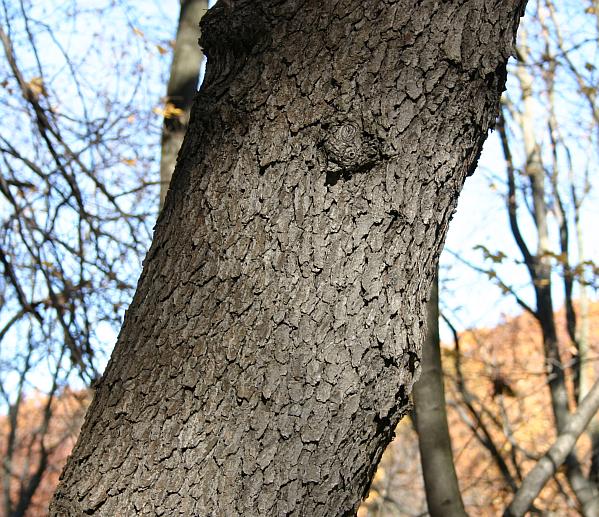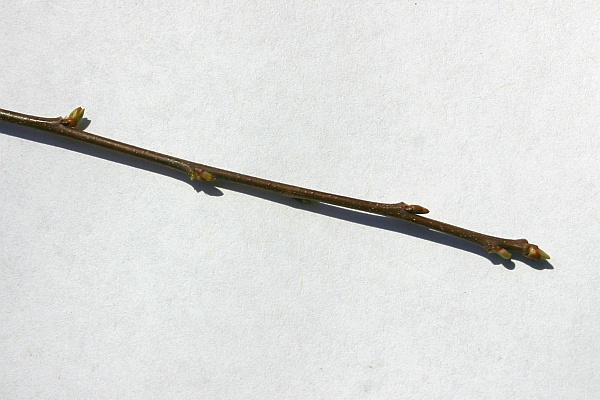
Today’s tree is easy to identify all year simply by looking at its bark.
Black cherry (Prunus serotina) is a medium to large tree, 50 to 100 feet tall. Mature trees have dark colored bark that looks like burnt potato chips. The shadowy photo above accentuates the chips.
In bright light the trunk looks paler but the chips are still there, as you can see by this photo taken in full sun.

Young trees have smooth shiny bark with pale horizontal lines or lenticels. Even the twigs have lenticels that appear as spots in the picture below. The buds are alternate, small and scaled. This twig looks like it wants to open its buds, proof that it’s been a weird warm winter.

Black cherries are a favorite of birds in late summer because the trees produce an abundance of small red to purple cherries, 1/3″ in diameter. Foresters like the tree for it’s cherry-colored wood which fetches a good price.
Keep your eyes open for black cherry trees and you’ll be surprised how many you find.
(photos by Kate St. John)
Is this cherry tree in same family as the “choke cherry”. When we had a house built in the 60s the lot was full of them, the birds loved it, and because they were close to the driveway we put in the cars were stained. We eventually had to cut alot of them down due to size, proximity to house itself but the black carpenter ants we found out, had eaten out the center of most of them & so falling over onto the roof was a hazard. Tree looks about the same bark style.
Interestingly, in a Phipps course I took on native trees and shrubs, we were told that an effort was made to grow cherry trees in Europe, but they could never get them to grow to a size that was valuable for lumber…they just became spindly invasive trees. You wouldn’t think that the climate would be so different that they couldn’t adapt (lots of successful non-native trees grow here).
Yes, choke cherries and black cherries are related. They are in the same genus — Prunus — along with plums, peaches, apricots and almonds.
Perhaps the cherry trees didn’t grow well in Europe because they need a particular organism in the soil in order to thrive — or because they’re susceptible to a foreign pest. Similarly, we would have learned quickly about the Emerald Ash Borer if someone had tried to grow our ash trees in Asia. Maybe someone did. In any case, we have the bug here now and are learning about it the hard way. 🙁
i will be looking for the burnt potato chips — good way to remember how to ID the black cherry tree — Thanks — barbara